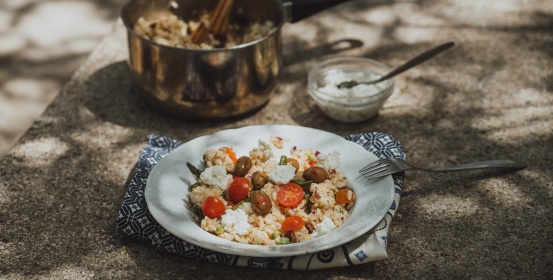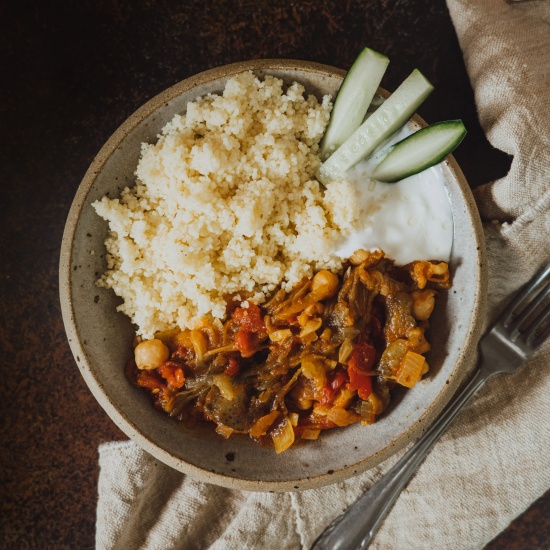Introduction
Urolithiasis, or the formation of stones in the urinary tract, has been around since the dawn of civilisation – and the disease was already described by the Ancient Egyptians and in Antiquity (1). It is relatively common, with incidence of 0.5% and prevalence of 4% (2). Men are between two and four times more likely to develop calcium bladder stones (3).
Classifying bladder stones
Bladder stones can be divided into four main groups (4):
- calcium oxalate or calcium phosphate stones (75% of all stones);
- uric acid stones (10%);
- magnesium ammonium phosphate (infection) stones (10%);
- cystine stones (1%).
Bladder stone risk factors
Between 70 and 80% of bladder stones are made up of calcium salts, in particular calcium oxalate and calcium phosphate (5). In the majority of those affected, stones reappear over a period of five years. Calcium bladder stones present problems as a result of their variable clinical course, varied etiology and associated diseases. Environmental factors, metabolic disorders and genetic factors are the main culprits in the formation of calcium bladder stones, with the most important environmental factor being diet (6). Hypercalciuria (39%), hyperoxaluria (32%), hypocitraturia (29%), hyperuricosuria (23%) and hypomagnesiuria (19%) are some of the metabolic risk factors that can lead to the formation of bladder stones (7). The course of the disease cannot be predicted on the basis of one metabolic disorder alone. It is known that patients with multiple stones are also more susceptible to a recurrence of the disease (8).
Preventing the formation of bladder stones is not an easy task. Many specialists believe that removing stones is a better solution than spending money on preventing them from forming in the first place; however, the latest data shows that preventive treatment can also be justified economically (9). Sufficient hydration is necessary in order to prevent bladder stones from forming, with between two and three litres of liquid a day being regarded as sufficient (10). Heavy intake of protein in food is also responsible for the formation of stones as it increases the excretion of calcium and oxalates in the urine (11). Reduced calcium leads to greater absorption of oxalates and their increased excretion in the urine (12).
The ratio between promoters (calcium, oxalate) and inhibitors of stone formation (magnesium, citrate) is an important factor in stone formation, as is urine pH (between 6 and 6.4 is optimal; 13). A meta-analysis has shown that treatment using thiazide diuretics has statistically significant benefits. For other treatment methods, too few patients have been included in clinical research, or else too little research published, to enable statistical significance to be confirmed (14).
The use of mineral water increases diuresis, changes the pH of the urine, and can alter the ratio between inhibitors and promoters of bladder stone formation.
Donat and bladder stones: a research study
The research study published by Prevorčnik, A. et al. (15) examined the effect of drinking Donat natural mineral water on the biochemical composition of the urine of 12 patients with recurrent calcium oxalate stones. The patients drank 2.5 litres of liquid daily, including 0.4 litres of ordinary water in the first week and 0.4 litres of Donat in the second week. On the sixth and thirteenth days, patients had their urine analysed in the morning and at 4- and 24-hourly intervals. On the seventh and fourteenth days, the urine was only analysed at 24-hour intervals. All patients were also examined for acid-base status and for serum concentrations of sodium, potassium, chlorides, calcium, magnesium, inorganic phosphates, urates, urea, creatinine and glucose. Urine samples were measured for volume, relative density, osmolarity, pH, and concentrations of potassium, sodium, chlorides, calcium, magnesium, urates, oxalates, inorganic phosphates, citrates, creatinine, titratable acids, ammonium and hydrogen carbonates. The risk indices for the formation of calcium oxalate bladder stones (calcium/magnesium (Ca/Mg) and oxalates/citrates (Ox/Cit)) were analysed for all samples.
Serum concentrations of potassium, sodium, chlorides, calcium, phosphates and creatinine all increased to a statistically significant extent after daily consumption of Donat over a seven-day period. There were also statistically significant increases in pH and pCO2. An increase in diuresis and a reduction in the relative density and osmolality of urine was observed over a 24-hour period. The excretion of magnesium and citrates increased, while the pH of the urine rose slightly and approached the ideal value of 6.5. The risk indices for the formation of calcium/magnesium and oxalate/citrate stones also fell.
Dolit
Following research into the inhibition of calcium oxalate and urate bladder stones through the consumption of Donat, we produced a preparation in powder form called Dolit. Dolit is a patented preparation for preventing the recurrence of calcium oxalate and urate stones. It contains the crystallisation inhibitors magnesium, citrate, bicarbonate and Vitamin B6. One dose contains 15.8 g of powder, comprising 1.5 g of sodium citrate, 7.7 g of magnesium gluconate, 6.6 g of potassium hydrogen carbonate and 2 mg of Vitamin B6. The recommended daily dose (divided into two to three separate doses) contains 4.8 mmol of citrate, 18 mmol of magnesium and 69 mmol of bicarbonate (16).
Thirty-four patients (16 men and 18 women aged between 23 and 71, average age 50.9 years) took part in a two-year prospective randomised single-blind study. The patients were divided by lots into experimental (16) and control (18) groups. The study comprised patients with recurrent calcium bladder stones, i.e. at least one recurrence in the last two years. Before the study commenced, all patients were asked about their dietary and drinking habits; their demographic and vital data was also obtained, their hemogram and biochemical blood parameters checked, and their 24-hour urine collection analysed. A clear image and/or ultrasound of the urinary tract revealed whether bladder stones were present in any patient. All patients then drank 500 ml of the drink daily for two years. The experimental group drank Dolit mineral preparation, while the control group drank ordinary water. At the end, the state of health of every patient was checked, and the laboratory data that had been checked at the beginning of the study was re-checked. Twenty-four months after starting the course, there were no statistically significant differences in the hemogram values, the biochemical blood parameters or the 24-hour urine collection values between the two groups. However, there was a statistically significant increase in concentrations of magnesium (p = 0.0047), phosphates (p = 0.0103) and citrates (p = 0.0410) in the experimental group. In the 24-hour urine collection within the control group, there was a statistically significant reduction in urine specific gravity (p = 0.0137) and an increase in calcium (p = 0.0382) and magnesium (p = 0.0068) values. There was also a statistically significant reduction in the lithogenic index for calcium/magnesium (p = 0.0049) in the experimental group. There were no statistically significant differences between the experimental and control group in terms of the number of stones in the urinary tract before (p = 0.7125) or after drinking the preparation (p = 0.2297). Eighty-eight per cent of patients in the experimental group and 83% of patients in the control group were satisfied or very satisfied with the preparation. Three patients left the study early because of an adverse reaction (two from the experimental and one from the control group).
Conclusion
Based on the research conducted, we can conclude that drinking Donat increases diuresis, reduces urine density and increases pH to between 6.0 and 6.5, all to a statistically significant extent, thereby reducing the risk of the formation of calcium oxalate, calcium phosphate and urate bladder stones. The excretion of magnesium and citrates increased and the risk index for calcium bladder stones (Ca/Mg and Ox/Cit) fell, both to a statistically significant extent. Donat therefore constitutes a complementary preventive means of treating calcium and urate bladder stones.
References
- Ostojić B. Istorijski pregled bubrežne litiaze. V Ostojić B. Kamen u bubregu. Beograd-Zagreb. Medicinska knjiga, 1970: 1–6.
- Vahlensieck EW, Bach D, Hesse A. Incidence, prevalence and mortality in the German Federal Republic. Urol Res, 1982: 141–4.
- Tissdelius HG, Larsson L. Calcium phosphate – an important criystal phase in patients with recurrent calcium stone formation. Urol Res, 1993; 21:175–80.
- Freitag J, Hruska K. Pathophsiology of nephrolithiasis. V KlahrS. The kidney and body fluids in health and disease. New York-London: Plenum Medical Book Company, 1983: 523–53.
- Marangella M, Vitale C, Bagnis C, Bruno M,Ramello A. Idiopathic calcium nephrolitiasis. Nephron 1999; 81:38–44.
- Smith CL, Davis M, Berkseth RO. Dietary factors in calcium nephrolitiasis. J Renal Nutr 1992; 2:146–53.
- Hess B, Hasler-Strub U, Ackermann D, Jaeger P. Metabolic evaluation of patients with recurrent idiopathic calcium nephrolitiasis. Nephrol Dial Transplant 1997; 12:1362–8.
- Trinchiery A, Ostini F, Nespoli R. A prospective study of recurrent rate and risk factors for recurrents after a first renal stone. J Urol, 1999; 162:27–30.
- Tiselius HG. Metabolic evaluation and therapy. Curr Op Urol, 2000; 10:545–9.
- Borghy L, Meschi T, Schianchi T. Urine volume: Stone risk factor and preventive measure. Nephron, 1999; 81:31–7.
- Hess B. »Bad dietary habits« and recurrent calcium oxalate nephrolitiasis. Nephrol Dial Transplant, 1998; 13:1033–8.
- Kocvara R, Plazbura G, Petric A. A prospective of nonmedical prophylaxis after a first kidney stone. BMJ Int, 1999; 84:393–8.
- PakCYC. Medical management of nephrolithiasis. J Urol, 1982; 128:1157–64.
- Pearle MS, Roehrborn CG, Park CYC. Meta-analysis of randomized trials for medical prevention of calcium oxalate nephrolitiasis. J Endourol, 1999; 13:679–85.
- Prevorčnik A, Drinovec J, Jurjec D, Mihelič M. Use of Donat Mg in the prophylaxis of urolithiasis – theoretical and practical considerations. Zdravstveni vestnik, 1991; 60:223–6.
- Tepeš B, Jurjec, D. Sredstvo za prevencijo kalcij oksalatnih uratnih sečnih kamnov, patent: SI 22238 A. Ljubljana: Urad RS za intelektualno lastnino, 2007.
- Tršinar B, Kmetec A, Oblak C, Žumer Pregelj M, Tepeš B. Učinkovitost s citrati obogatenega mineralnega napitka pri preprečevanju nastanka kalcijevih kamnov v sečilih Zdravstveni vestnik, 2010; 79:7–18.
Choose chapter:






